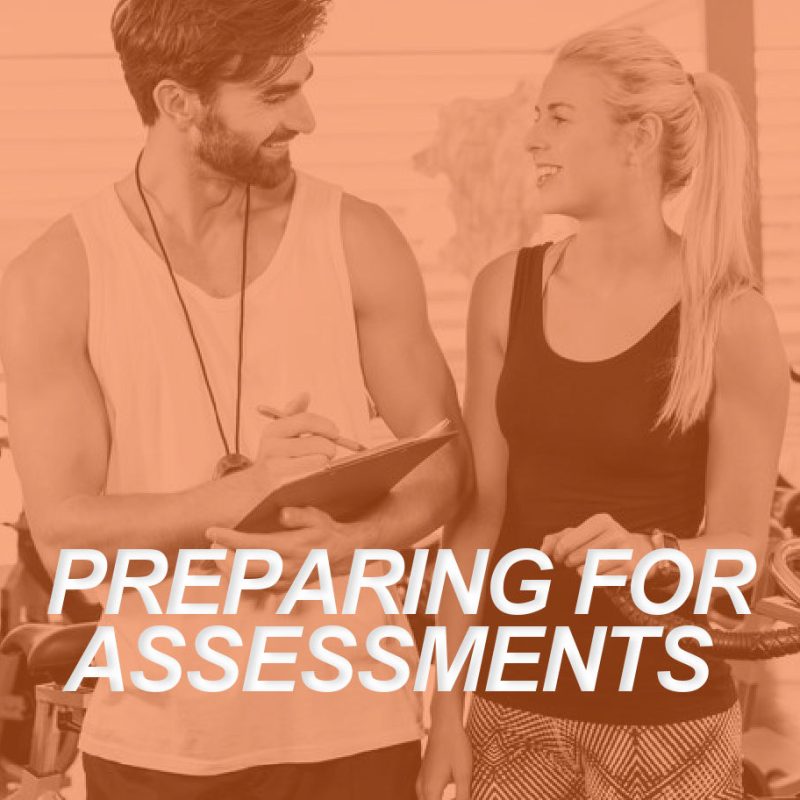
Health and physical assessments are integral to the personal training experience. When working with clients, it is not possible to overcommunicate or overprepare – especially for a client who is new to a gym or personal training experience. While clients may have a basic understanding of what they will do during a session (move), they can benefit from clear, specific instructions. Here are two ways to better prepare your clients for their work with you, especially with regard to physical assessments.
Preparing Clients for Physical Assessments
The assessment process and protocols you select will vary based on a client’s goals, intentions, and health status. However, preparing your client for any assessment, physical or resting measurements (BP, HR, BIA, etc.) requires more than just telling them to show up in comfortable workout attire and athletic shoes. For my clients (and myself), I like to use a checklist. Checklists provide structured reminders about important tasks and organizational requirements needed to run a successful session.
The following checklist is what I use to help me structure my “before the session” communication to my clients. As I create the written communication, I include detailed information about each of the following points.
Client Checklist
| Client Communication Points | |
| Explain the testing protocol(s) and purpose of each to my client | Completed |
| Explain when the tests will be terminated (presence of signs, symptoms, or form deteriorates) | |
| Instruct my client to be:
· Well-rested · Fueled · Hydrated · Free of illness or injury |
|
| Confirm if my client is on any medication or has used any stimulant | |
| Explain the warm-up procedure | |
| Remind client to wear comfortable workout attire, shoes, and to bring a water bottle. | |
The Professional’s Checklist
On the day of the assessment session, I use the following checklist to ensure the following tasks are completed before my client arrives.
| Personal Trainer Assessment Preparation | |
| Organize equipment and assessment stations | Completed |
| Calibrate and test equipment where necessary | |
| Protocol and recording sheets are in order | |
| Assessment environment is:
· Clean · At the appropriate temperature and humidity · Quiet/free of distractions · Private for any body composition measurements |
|
| Timing and sequencing of tests are in order | |
| Emergency protocols and contact information are readily available | |
| Ask client if they have questions or concerns | |
| Remind clients that they can stop any tests at any point | |
When conducting assessments, it’s a good idea to have a Plan B if you find a piece of equipment is not functioning adequately. Ideally, if you are conducting multiple assessments, schedule them over a couple of sessions. For example, you can conduct resting measurements, a cardiorespiratory fitness test, postural assessments, and flexibility/mobility tests on a single day. This would be followed by muscular strength and endurance assessments on a different day.
However, in most cases, you and your client will select two to three assessments to conduct. It’s rare when a client wants (or needs!) a full battery of assessments unless they are highly interested in multiple benchmarks and/or the client has a performance-based goal. Part of your discernment as a personal trainer is to decide what is absolutely necessary based on your clients’ goals and your professional observations of what they need.
Being adequately prepared and adequately preparing your clients for what any session will entail before the session begins is a high mark of professionalism, efficiency, and effectiveness.







